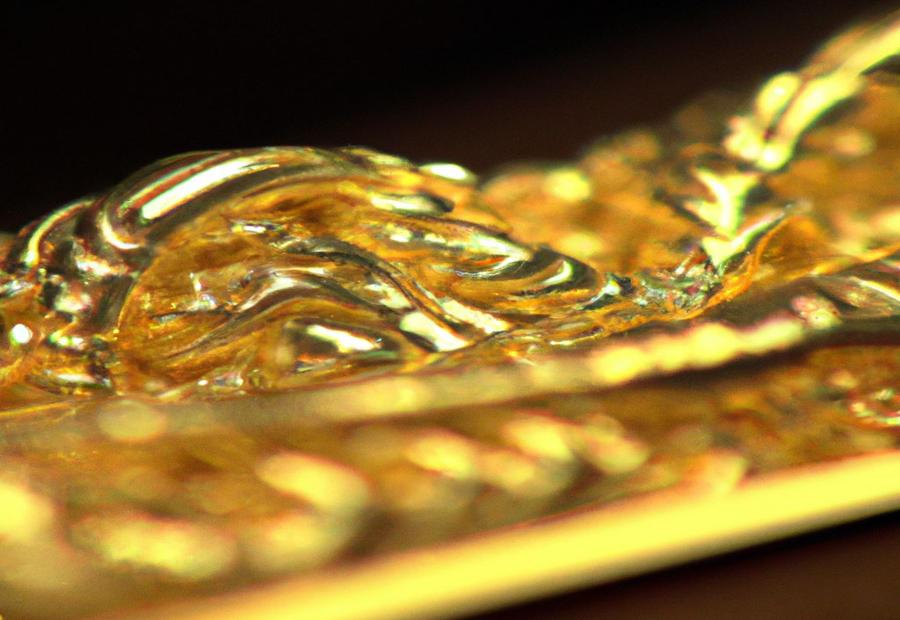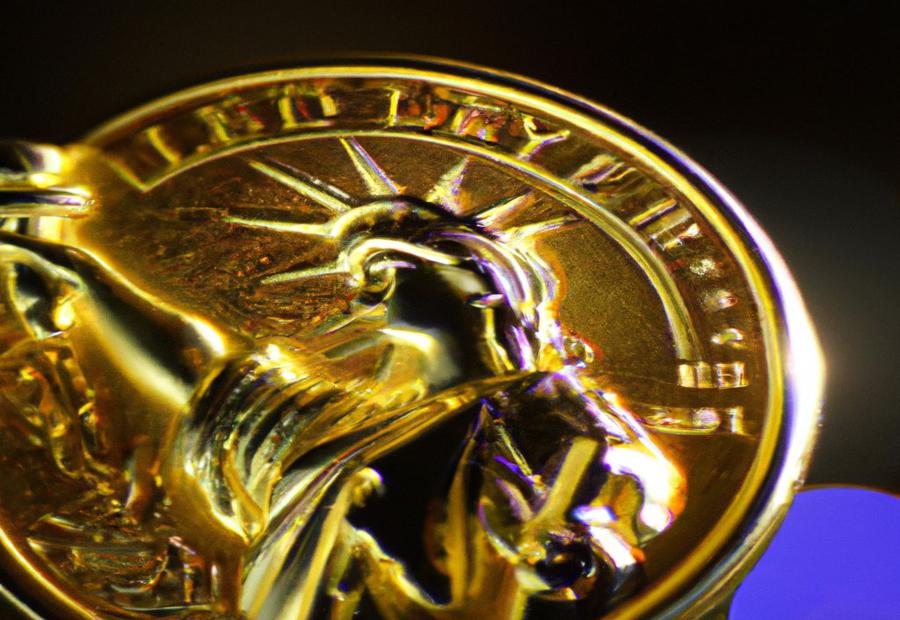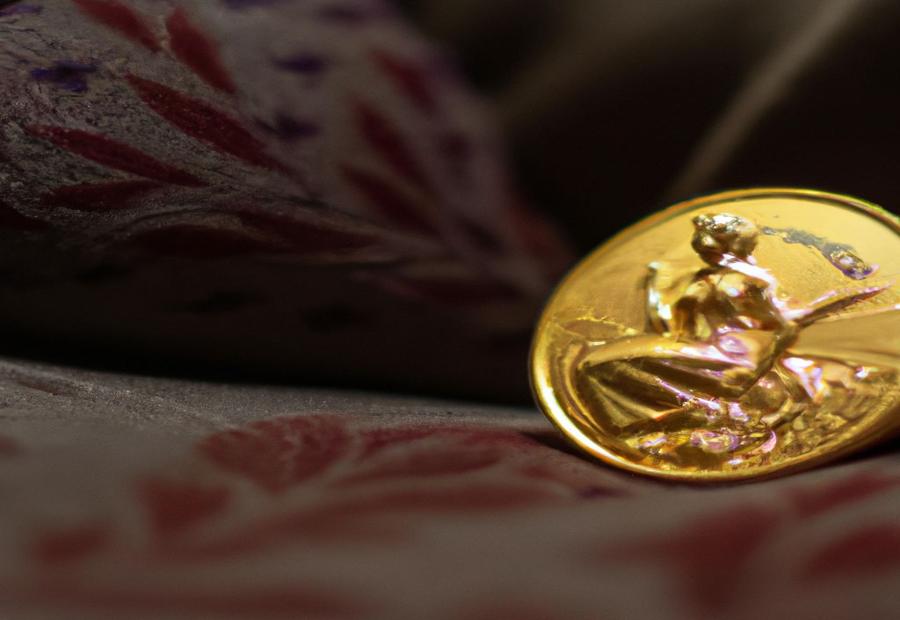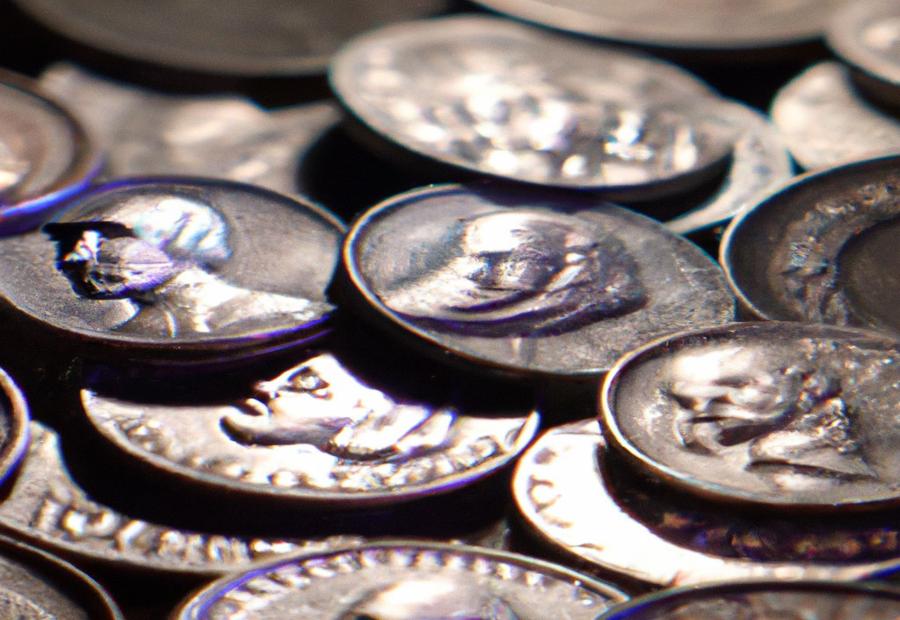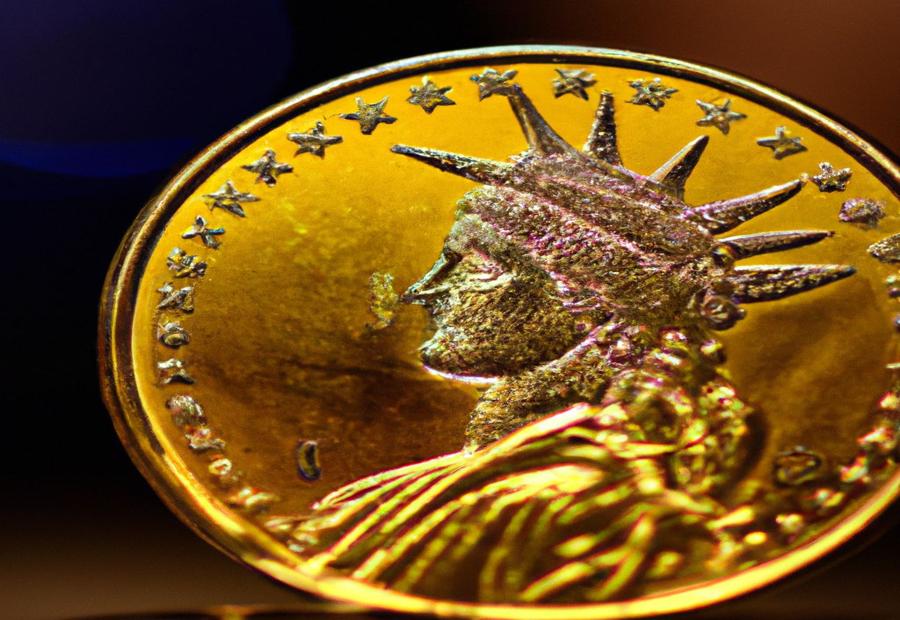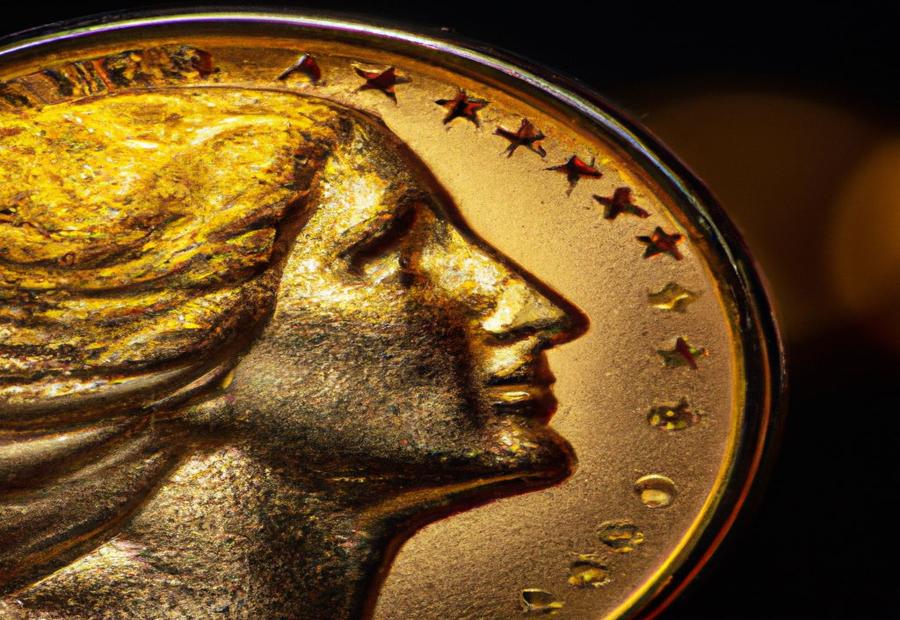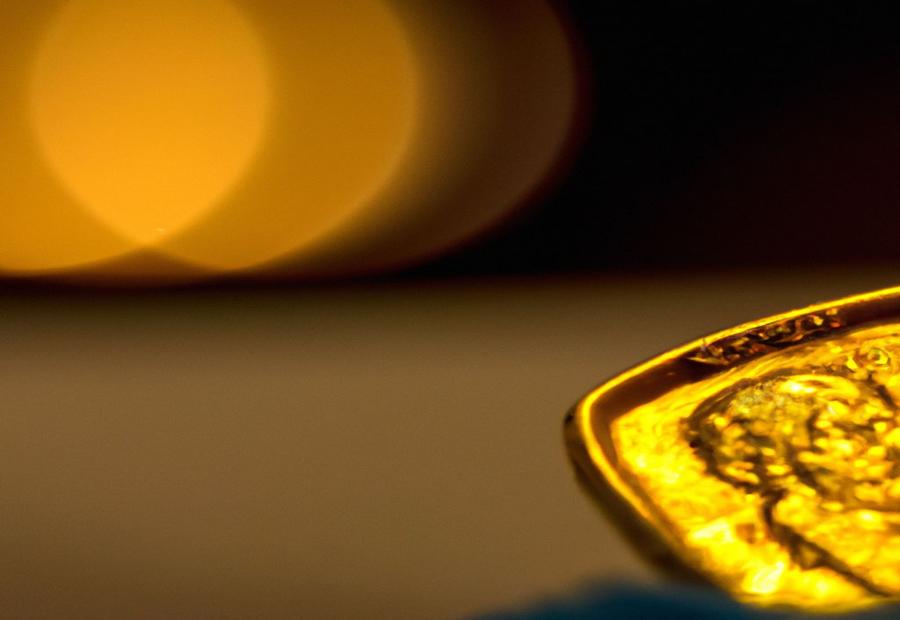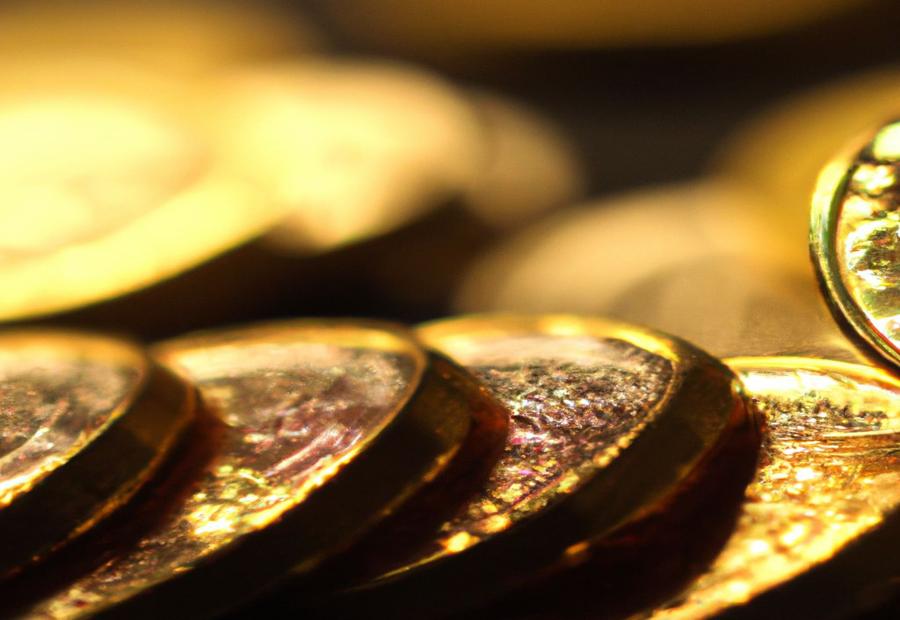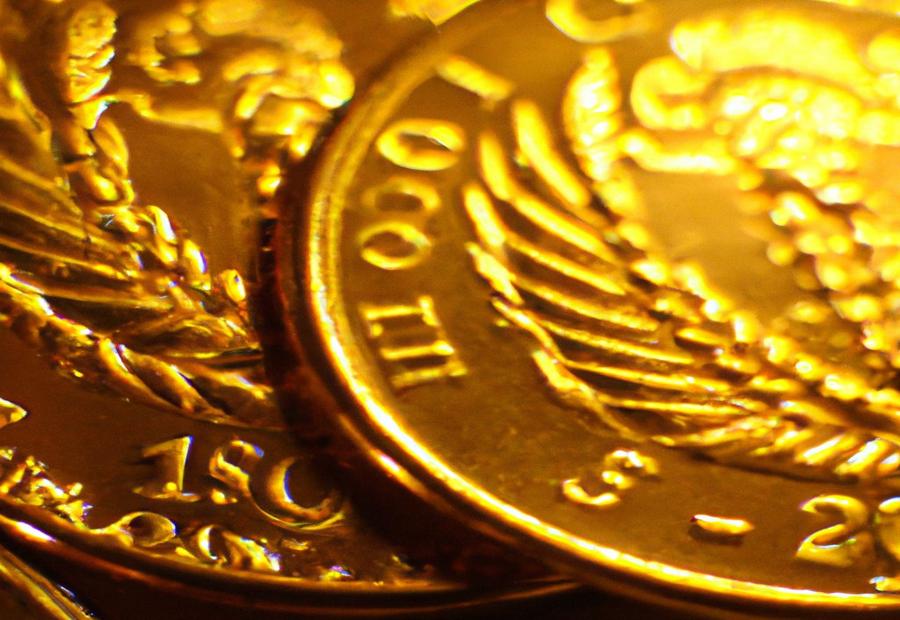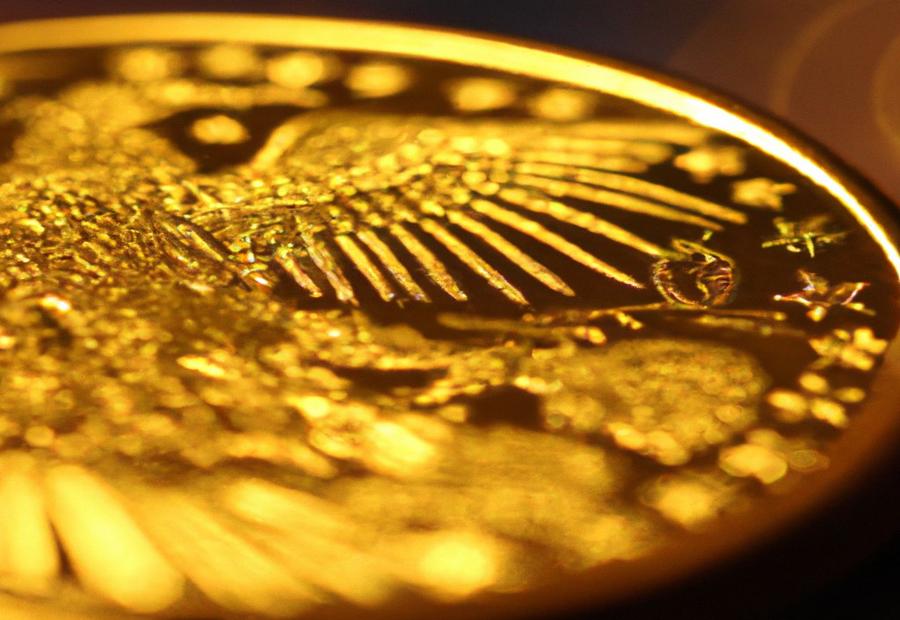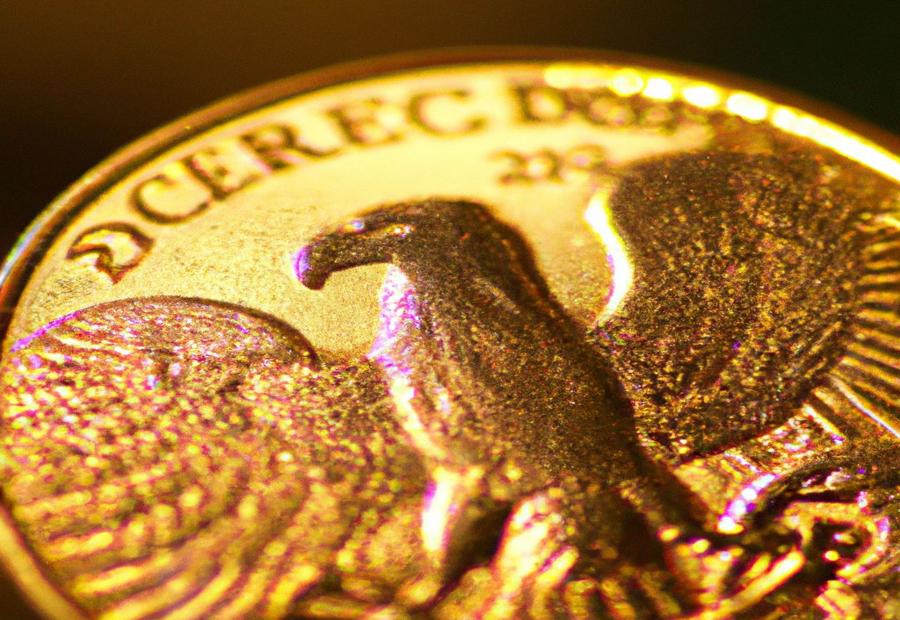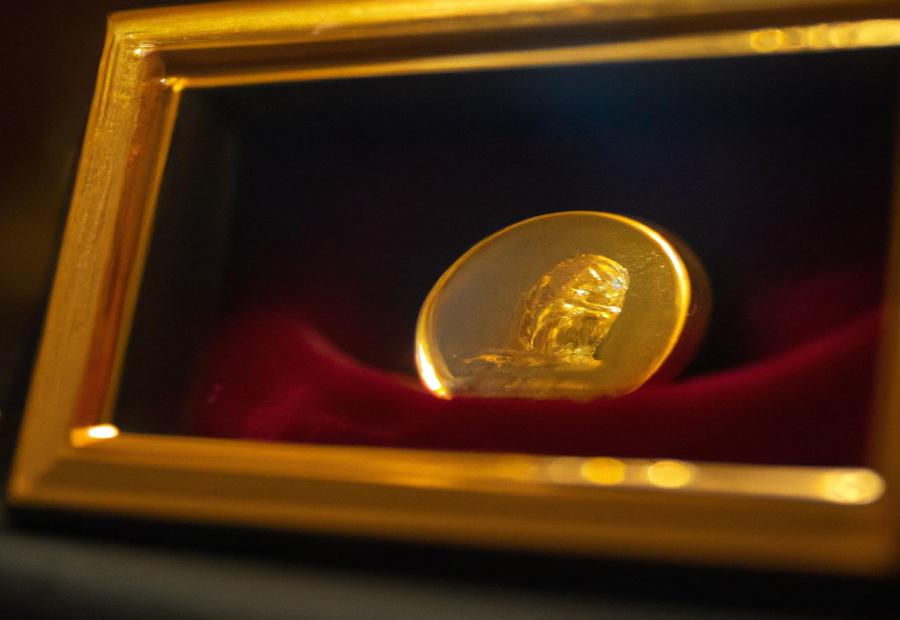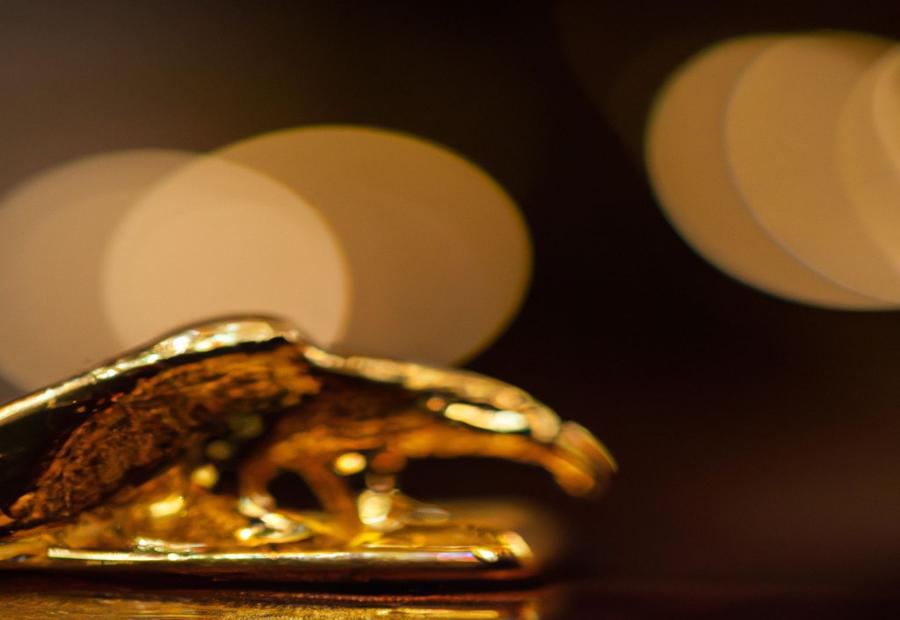Key Takeaway:
- The value of a $20 Liberty gold coin can vary based on factors such as coin condition, rarity, and current market demand.
- When buying or selling a $20 Liberty gold coin, it is important to compare prices from different dealers to ensure you are getting a fair price.
- Collectibility and demand for different versions and types of $20 Liberty coins can also affect their value in the market.
Related Post:
How Much Is 1/4 Ounce of Gold Worth
How Much Are Gold Roses Worth Acnh
Introduction
Photo Credits: Ecopolitology.Org by Charles Wright
The $20 Liberty gold coin holds a significant place in the realm of numismatics. In this section, we will uncover the fascinating background information surrounding this prized coin, including its historical context and unique features. Additionally, we will explore the various factors that influence the value of the $20 Liberty gold coin, shedding light on what determines its worth in the present market. Get ready to delve into the intriguing world of this valuable and sought-after coin.
Background information on the $20 Liberty gold coin
The $20 Liberty gold coin is popular with both collectors and investors due to its historical value. This iconic coin was minted in the late 19th and early 20th centuries, and features Lady Liberty on the obverse and a majestic eagle on the reverse. Its intricate design and high gold content make it attractive to numismatic enthusiasts.
What influences the value of the $20 Liberty gold coin? Firstly, the year it was minted is important in determining its rarity and desirability. The condition of the coin is also crucial – its grade and any damage it may have sustained over time. Additionally, market demand and trends also play a role.
The $20 Liberty gold coin comes in various versions and types to suit different collectors. Therefore, pricing may vary between different versions.
Historical data suggests that rare and well-preserved $20 Liberty gold coins have consistently increased in value over time. This makes them appealing to investors.
For buyers or sellers of the $20 Liberty gold coin, it is important to stay updated on current prices. Comparing prices from different dealers ensures fair value or higher prices when selling.
To make the most of this golden beauty, it is essential to understand the factors that contribute to its worth. It is both historically significant and a potential investment.
Factors that contribute to the value of the $20 Liberty gold coin
The value of a $20 Liberty gold coin can vary greatly. Factors such as condition, rarity, and demand all influence it. Coins in excellent condition with minimal damage usually fetch higher prices. Those with limited mintage numbers or unique characteristics are considered more valuable. Demand for the coin also plays a key role.
A table displaying the factors affecting the coin’s value could include columns such as “Condition,” “Rarity,” and “Demand.” Under each column, details like different condition categories, rare variations, and indicators of demand could be listed.
Other details can also influence the coin’s value. For example, certain years or mint marks may be prized for their historical significance or rarity. Any design changes during its production run could also result in valuable variations. Researching and considering all relevant factors is important when collecting or investing in these coins. Shop around and be sure to compare prices from different dealers!
Comparison of prices from different dealers
Photo Credits: Ecopolitology.Org by Billy Garcia
Gold prices vary amongst different dealers. This means it’s important for buyers to compare prices. The value of a $20 gold piece, also known as a double eagle, is affected by factors such as its condition, rarity, and the market demand for gold.
A great way to compare prices from different dealers is to create a table. This table should include columns like dealer name, the price of the gold piece, and any additional details such as the coin’s condition or promotions. This way, buyers can easily compare the prices and make an informed decision.
Also, buyers should consider any unique details provided by the dealers. For example, some dealers may offer guarantees of authenticity or additional services like grading or certification. These details can influence the overall value of a dealer’s offer. So, these details should be taken into account when comparing prices.
By considering the prices and details offered by different dealers, buyers can be sure they are getting the most value for their money when buying a $20 gold piece. Buyers should do research and comparison before making a purchase.
Collectibility and demand for different versions and types of $20 Liberty coins
Photo Credits: Ecopolitology.Org by Adam Brown
The collectibility and demand for $20 Liberty coins can vary greatly, based on their historical significance, rarity, condition, and appeal in the numismatic market. These factors can have a huge effect on the coin’s value, making them sought after by collectors and investors alike.
To better understand the collectibility and demand, let’s take a look at some key aspects:
- Minting Year: Older coins tend to be more desirable due to their historical significance and limited availability.
- Mint Mark: Coins from rarer locations or with unique mint marks may command a higher premium.
- Condition: Well-preserved coins, without wear or damage, are more desirable to collectors.
- Rarity: Rare coins, especially those with limited mintages, are highly coveted and often priced higher.
- Historical Significance: Coins with historical significance, such as those featuring special designs, may garner increased interest and demand.
By considering these factors, collectors and investors can measure the collectibility and demand for different $20 Liberty coins, aiding their investment decisions. It is important to note that the provided information serves as an overview, and for further understanding of individual coins, it is recommended to consult numismatic references and engage with knowledgeable dealers or experts.
Future value projections for the $20 Liberty gold coin
Photo Credits: Ecopolitology.Org by Tyler Lewis
Future value projections for the $20 Liberty gold coin can provide beneficial insights. It is highly sought-after, so its value is predicted to increase. Gold prices have continually risen, making it a great investment. The scarcity and historical relevance of the coin contribute to its future value too. Economic conditions, market fluctuations, and collector demand affect the value.
A table has been created below with the projected value for each timeframe. It’s important to remember that these values are estimates based on history and trends. They may differ depending on factors influencing the gold market.
| Timeframe | Projected Value | Factors Influencing Value |
|---|---|---|
| Short-Term | $X | Economic conditions, market trends |
| Medium-Term | $Y | Collector demand, historical significance |
| Long-Term | $Z | Scarcity, global market conditions |
The $20 Liberty gold coin has a special place in American history. It was first minted in 1849, during the California Gold Rush. It is admired for its intricate design and craftsmanship.
It is wise to consult with experts and do research for accurate and up-to-date information on future value projections. Sources like financial institutions, numismatic experts, and trusted gold dealers are recommended.
Latest data on current prices for different years and conditions of the $20 Liberty coin
Photo Credits: Ecopolitology.Org by Arthur Davis
The $20 Liberty coin is a valuable collectible. Prices can vary depending on the year and condition. The latest data offers insight into current prices, helping collectors and investors make wise decisions.
For example, an average 1924 $20 Liberty coin is worth $1,300. But a 1908 coin in uncirculated condition can fetch up to $2,500. Prices fluctuate based on rarity and demand.
It’s important to stay updated on the latest trends and market conditions.
The table shows specific prices for the coin. But there are more years and conditions with different prices. Plus, condition and historical significance can affect its value.
To understand current prices, it’s best to consult experts or reference guides. This way, you can make informed decisions and potentially make the most money.
Introduction to twenty dollar gold coins issued by the United States Mint
Photo Credits: Ecopolitology.Org by Matthew Young
The United States Mint has issued twenty dollar gold coins that hold significant value, but determining their worth requires considering the condition of the coin. In this section, we will explore the importance of coin condition in determining the value of these remarkable gold pieces. Get ready to uncover the key factors that affect the worth of these coins and gain insights into their potential worth in today’s market.
Importance of coin condition in determining value
Coin condition is key for the value of a $20 Liberty gold coin. It’s all about the overall state of the coin, such as wear, damage, and preservation. A coin with minimal wear and no damage is more valuable than a worn out or damaged one. This is because collectors and investors like coins in excellent condition. They are sought after and have higher prices.
Luster, sharpness of details, presence of any cleaning or tampering, and the overall appeal are also part of coin condition. Coins with luster and sharp details have better eye appeal and are more valuable. Cleaned or tampered coins are not liked as much and have a lower value.
A grading system is used to assess coin condition. It assigns a grade, from poor to perfect, to denote the overall condition. Professional grading services use standards to give an unbiased evaluation of the coin’s condition.
Understand the importance of coin condition when buying $20 Liberty gold coins. Prioritize coins with minimal wear and damage to keep the value. When looking for rare or high-grade coins, expect higher prices for superior conditions. Recognizing the significance of coin condition is essential for the market of $20 Liberty gold coins.
Significant categories of twenty dollar gold coins: Liberty Head and St. Gaudens series
Photo Credits: Ecopolitology.Org by James Jackson
The significant categories of twenty dollar gold coins are the Liberty Head and St. Gaudens series. Both are highly sought after by collectors and investors for their exquisite design, rarity, and intrinsic value.
The Liberty Head series, also known as the Coronet series, was minted from 1849 to 1907. It features a classic image of Lady Liberty on the obverse side.
The St. Gaudens series was designed by renowned sculptor Augustus Saint-Gaudens and minted from 1907 to 1933. It showcases Lady Liberty with a radiant sun in the background.
We can refer to the reference data for more information about the different types and varieties within these series. The Liberty Head series consists of four types, with variations in design and placement of the motto “In God We Trust.” The St. Gaudens series includes pre-1933 issues with Ultra High Relief and Double Eagle varieties. There are also modern re-strikes available, allowing collectors to acquire replicas in pristine condition.
By exploring the intricacies of the two series, collectors and enthusiasts can gain a deeper appreciation for their artistry, history, and collectability. For instance, the St. Gaudens series is the only U.S. gold coins to feature actual edge lettering. The Liberty Head series underwent design modifications throughout its production run.
Notable rare coins in the $20 gold coin category
Photo Credits: Ecopolitology.Org by Charles Thomas
The world of rare coins presents a special occasion for collectors and investors to own a bit of history and gain from possible appreciation. The $20 gold coin category is especially noteworthy for its many exceptional coins with both historic and financial significance.
One coin to pay attention to is the Saint-Gaudens Double Eagle. It was crafted by renowned sculptor Augustus Saint-Gaudens and features a beautiful image of Lady Liberty carrying a torch and olive branch, which symbolizes freedom and peace. Its detailed design and fine artwork make it highly sought-after.
The Liberty Head Double Eagle, minted from 1850 to 1907, is another important coin of note. It displays Lady Liberty wearing a coronet with the word “Liberty” inscribed, and is treasured for its historical importance with its representation of America’s success in the late 19th and early 20th centuries.
The Indian Head Eagle is also a rare coin of the $20 gold coin category. It was made from 1907 to 1933 and shows an indigenous American chief on the obverse and a proud eagle on the reverse. Its exceptional design and history make it coveted by collectors.
Then there’s the Coronet Liberty Head Eagle, made from 1838 to 1907. It has a profile of Lady Liberty wearing a coronet inscribed with the word “Liberty”. Its rarity and potential for future value make it especially interesting to collectors and investors.
Lastly, the Type 1 Double Eagle was minted from 1850 to 1866. It portrays Liberty facing left on the obverse and a heraldic eagle on the reverse. Its limited mintage and historic importance make it highly desirable.
Don’t miss out on the chance to own these notable rare coins and potentially benefit from them in the future.
Buying and selling rare United States gold coins
Photo Credits: Ecopolitology.Org by Samuel Garcia
Are you buying or selling rare United States gold coins? It’s exciting and financially beneficial to assess the worth of these treasured items. They boast historical significance, with some even dating back to the early days of the nation. Plus, they can be a lucrative investment option as the price of gold rises.
When pricing and authenticating United States gold coins, experts consider factors such as condition, rarity, and historical significance. The value of a $20 gold piece can vary based on the market and the coin’s specifics. So, it’s important to do thorough research before buying or selling.
Overview of the $20 gold coin: Double Eagle
Photo Credits: Ecopolitology.Org by Douglas Lewis
The $20 gold coin, also known as the Double Eagle, is a significant piece of American currency. Its value has changed over time, but remains a sought-after collectible. This coin is made of gold and holds historical importance, symbolizing a unique era in U.S. coinage.
The $20 gold coin saw various design changes during its circulation. It featured Lady Liberty and the American eagle, representing the nation’s values and aspirations. Its intricate designs and high gold content make it a valuable object for numismatists and history lovers.
It is unique in weight and size. Weighing 33.4 grams, it contains around one troy ounce of gold. Its diameter of 34 mm makes it easily distinguishable from other coins.
Famous examples of the Double Eagle exist. One is the 1933 Double Eagle, which was originally struck but never released. It was illegally acquired and taken by the government. Years later, it was sold at auction for a record-breaking price.
The $20 gold coin has an interesting story, blending aesthetics, value, and cultural significance. Its design and gold content fascinate collectors and investors, making it a classic.
Different series and types of $20 gold coins
Photo Credits: Ecopolitology.Org by Alexander Johnson
Various series and kinds of $20 gold coins have their own characteristics and historical importance. The reference material gives valuable info on this topic. For instance, the article titled “How Much Is a $20 Gold Piece Worth Now” examines the worth and value of these coins.
Let’s look closely at the different series and types of $20 gold coins. To show the data in an orderly manner, a table can be made. This table gives a full view of the various series and types of $20 gold coins, as well as their specific features.
Besides the table, there are some unique details worth mentioning that haven’t been talked about before. These facts may include particular times when certain series or types of $20 gold coins were minted, any remarkable designs or engravings related to them, or even any special historical events that impacted their production. By looking into these additional details, a more thorough knowledge of the diverse range of $20 gold coins can be gained.
Grading and authentication of $20 gold coins
Photo Credits: Ecopolitology.Org by Thomas Perez
Grading and authenticating $20 gold coins is essential for assessing their worth and confirming legitimacy. Experts evaluate factors such as physical condition, authenticity, design, lettering, and unique minting characteristics to determine the coin’s value. Research and analysis are also conducted to verify history and provenance.
The following table summarizes key elements of the grading and authentication process:
| Factors to Consider |
|---|
| Physical Condition |
| Authenticity |
| Design |
| Lettering |
| Unique Minting Characteristics |
| History and Provenance |
The value of a $20 gold coin can fluctuate based on market conditions and the economy. It is wise to consult experts and reference reliable sources for up-to-date information.
These coins, known as “Double Eagles,” circulated during the late 19th and early 20th centuries. They played an important role in the economy. Now, they are collectibles and cherished pieces of American numismatic history. They are highly sought after by enthusiasts and investors.
Identifying real $20 gold coins
Photo Credits: Ecopolitology.Org by Donald Gonzalez
Authenticating real $20 gold coins can be difficult! They are valuable and desirable, so it is key to know how to recognize a genuine one.
Firstly, weigh and check the composition. Genuine coins are a 90% pure gold alloy, weighing 33.436 grams or 1.0755 ounces. Counterfeit coins may be different. Use a precise scale to measure this accurately.
Secondly, observe the design and details. Real $20 gold coins will have sharp, defined edges and lettering. Counterfeits can be blurry and shallow.
Thirdly, inspect the edge. Genuine coins will have reeded edges with even ridges running around. Counterfeits may have plain or irregular edges.
Finally, tap into the knowledge of professionals. Numismatists and coin dealers know how to tell real from fake. Plus, stay up-to-date on counterfeiting trends.
The most valuable $20 gold coin: 1933 Double Eagle
Photo Credits: Ecopolitology.Org by Frank Gonzalez
The 1933 Double Eagle is renowned for being the most valuable $20 gold coin. It has a highly desired status due to its rarity and uniqueness. Its worth is not just based on the gold content, but also on its historical importance and desirability among collectors. This makes the 1933 Double Eagle highly sought after in the numismatic market.
To understand the worth of the 1933 Double Eagle, look at the attributes it holds. The table below shows the key information:
| Year of Coin | Denomination | Gold Content | Rarity |
|---|---|---|---|
| 1933 | $20 | 0.9675 oz | Extremely rare |
The table reveals that the 1933 Double Eagle is extremely rare. Plus, it contains 0.9675 ounces of gold. These features make the coin valuable to both collectors and investors.
Moreover, the 1933 Double Eagle has a unique story. Most of the Double Eagle coins were melted down, due to the Gold Recall Act of 1933. However, some escaped destruction, making them even more precious and valuable. These coins are a part of American history and are highly desirable.
In 2002, one of these coins was sold at an auction for over $7 million. This truly demonstrates its value as one of the most valuable $20 gold coins. Its rarity and historical significance continues to captivate people, driving its worth to greater heights.
Considerations for investing in $20 gold coins
Photo Credits: Ecopolitology.Org by Richard Roberts
Investing in $20 gold coins can be a smart move for those who want to diversify their investment portfolio. These coins are pure gold and have a long-standing value, so they are a secure investment option. Plus, the historical importance and collectible nature of them adds to their charm.
- Historical Meaning: $20 gold coins have an impressive history, as they were minted between 1849 and 1933. This history not only increases the coins’ appeal but it also helps their potential value rise over time.
- Gold Worth: Since these coins are made from pure gold, they have an intrinsic value based on current gold prices. As the gold price changes, the coins’ worth follows, giving investors a chance to capitalize on gold market variations.
- Collectors’ Dream: Certain $20 gold coins, such as the Saint-Gaudens Double Eagle, are highly desired by collectors. Their rarity and special designs make them valuable for their gold content and numismatic worth.
- Portfolio Mix: Investing in $20 gold coins can help diversify a portfolio. It provides an alternate asset class that is not tightly connected to regular investments like stocks and bonds. This could help reduce risk and potentially boost total portfolio performance.
Taking these points into consideration, investing in $20 gold coins can be a wise decision for investors. Yet, some extra details must be taken into account. For instance, the coin’s condition can significantly influence its value, with coins in perfect condition demanding a higher premium. It is also essential to keep up with market trends and get advice from professionals in numismatics and precious metals to make educated investment choices. By carefully looking into these aspects and staying informed, investors could possibly gain from the long-term value and possible appreciation of $20 gold coins in their investment portfolio.
Conclusion
Photo Credits: Ecopolitology.Org by Brian Campbell
Ultimately, assessing the value of a $20 gold piece requires knowledge about the coin’s characteristics, market conditions, and historical context. It is important to consider rarity, condition, and significance when determining demand. Furthermore, the worth of gold fluctuates over time in response to economic trends and geopolitical events. Additionally, some coins may possess extra value due to being minted at specific times or carrying special designs. Thus, consulting experts and utilizing reliable sources is advisable to make informed decisions regarding buying or selling such coins.
Some Facts About How Much Is a $20 Gold Piece Worth Now:
- ✅ The value of a $20 gold piece varies depending on its type, condition, and rarity. (Source: Team Research)
- ✅ Over 100 different types of $20 gold coins were issued by the United States Mint from 1849 to 1933. (Source: Team Research)
- ✅ The condition of a $20 gold coin plays a crucial role in determining its value, with some coins worth up to $120,000. (Source: Team Research)
- ✅ Rare $20 gold coins from specific years, such as 1854-O and 1930-S, can be valued at over $100,000. (Source: Team Research)
- ✅ The most valuable $20 gold coin is the 1933 Double Eagle, which sold for over $7.5 million in 2002. (Source: Team Research)
FAQs about How Much Is A $20 Gold Piece Worth Now
How much is the melt value of a $20 gold coin?
The melt value of a $20 gold coin depends on the current spot price of gold. As of the latest market prices, the melt value of a $20 gold coin is approximately [current melt value].
Are pre-1933 US gold coins considered collector’s items?
Yes, pre-1933 US gold coins, including the $20 gold coin, are highly sought after by collectors. Their historical significance, rarity, and gold content make them valuable collectible gold coins.
How many different types of $20 gold coins were produced by the US Mint?
The US Mint produced over one hundred different types of $20 gold coins in terms of denominations, designs, and mint marks. These variations make collecting $20 gold coins an exciting pursuit for numismatists.
What are the factors that contribute to the exorbitantly high prices of $20 gold coins?
The high prices of $20 gold coins are influenced by factors such as their gold content, rarity, historical significance, and demand from collectors. These factors drive the value of $20 gold coins to levels that can reach millions of dollars.
How can I determine the value of my $20 gold coin?
To determine the value of a $20 gold coin, it is recommended to consult with coin experts and compare prices from different dealers. Additionally, referencing value guides such as the Red Book can provide insights into the worth of your coin.
Is it better to sell a single $20 gold coin or an entire collection?
Both single $20 gold coins and entire collections can hold value. Depending on individual circumstances and market demand, selling either a single coin or an entire collection can be a viable option. It is advisable to seek professional advice when deciding whether to sell.

.jpg)

